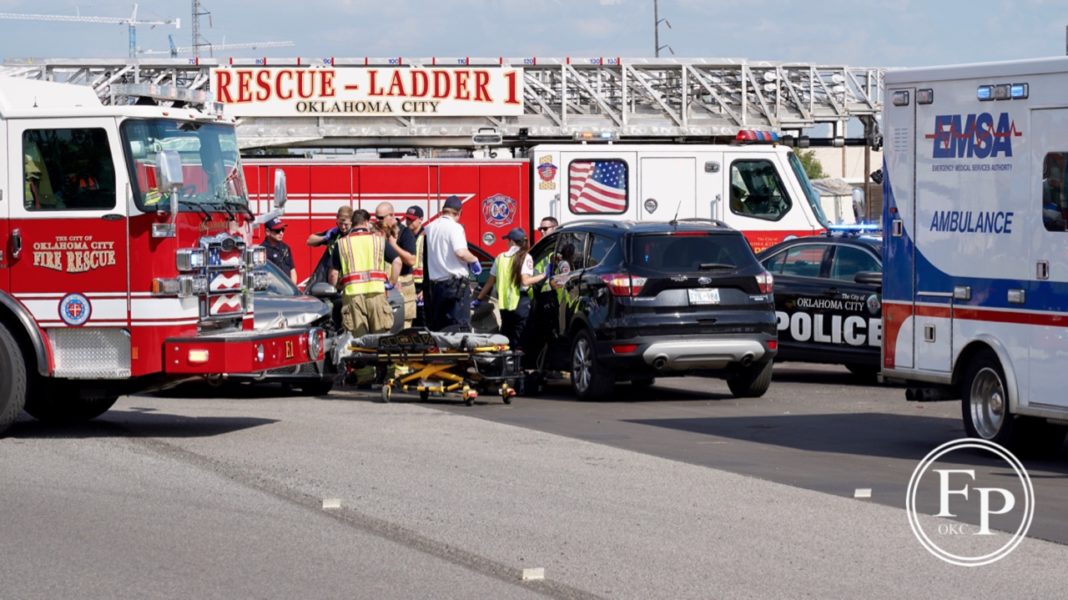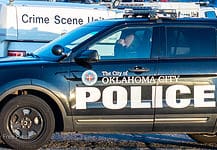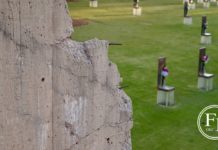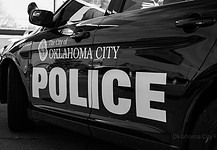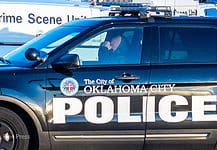Last Updated on December 26, 2019, 3:35 PM | Published: December 20, 2019
Friday the 13th was truly an ominous day for those who were involved in yet another auto-to-auto crash at Klein and Oklahoma City Boulevard.
Since then, the Oklahoma City Police Department reported yet another auto-to-auto crash Wednesday making 15 harrowing crashes at that intersection on the incomplete boulevard.
Free Press was first to call attention to the dangers of the intersection, already developing into a collision hot spot the first few days after the boulevard opened.
After our live crash scene photography and exposure of the police statistics, the City of Oklahoma City prioritized adding a signal at the intersection.
The need
Eric Wenger, public works director for the City of Oklahoma City, told Free Press in September that when they were coordinating the building and completion of the boulevard with the Oklahoma Department of Transportation, neither group of engineers anticipated the need for a signal so soon at that intersection.
But the risk to motorists, pedal cyclists, and pedestrians became obvious. Plans are in motion to add a signal as soon as the City receives all of the equipment from suppliers.
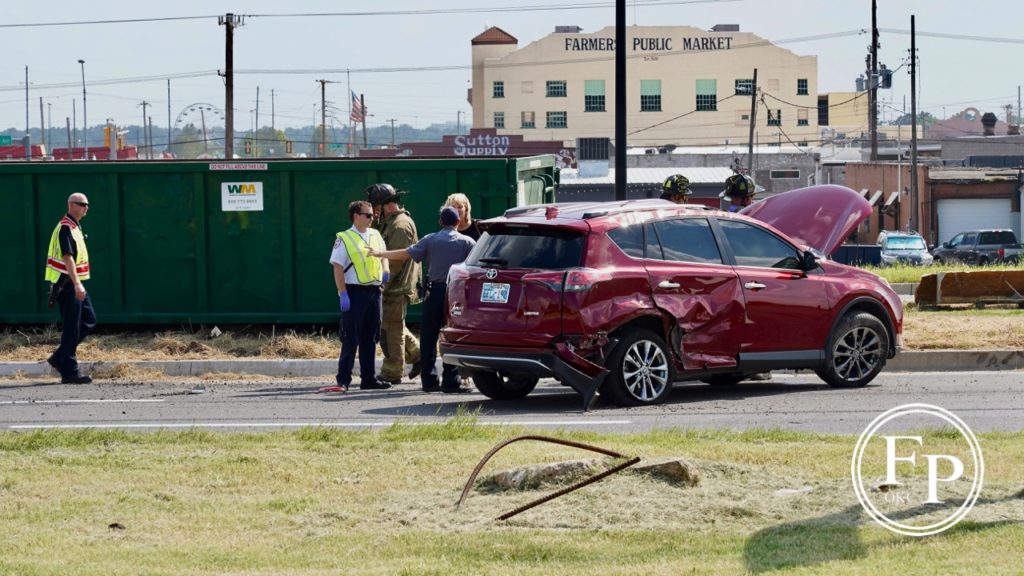
Traffic Commission
Engineering studies for adding a signal were completed and reported to the City Traffic and Transportation Commission in the October 21st meeting. The study showed that according to the Manual on Uniform Traffic Control Devices for Streets and Highways (MUTCD), the intersection exceeded the threshold for needing traffic signals.
In addition to requesting a signal, Wenger requested “interim use of all-way stop control at S. Klein and W. Oklahoma City Boulevard.”
But, at publication, we observed that the intersection is still a two-way stop with the boulevard traffic having no stop sign in either direction.
The commission approved Wenger’s request for a signal.
However, a caveat was included at the bottom of the report:
“Staff notes that construction of the traffic signal, if approved, would not be able to be started until the Oklahoma City Boulevard project is completed and transferred from the State of Oklahoma to the City.”
Weeks?
“We are just waiting for the poles, which are custom made for each particular intersection,” Wenger told Free Press Tuesday. “As soon as they get in, we will begin installation.”
Tuesday he anticipated the poles arriving in a few more weeks.
It remains unclear as to when the hand-off from ODOT to the City on that part of the boulevard project which would allow the signal to be installed.
Short-term actions
Within days after our first report, the Oklahoma City Police Department stepped up motorcycle patrols on the west end of Oklahoma City Boulevard.
More speed limit signs went up and stop signs at the two-way stops had orange signs that warned “Cross traffic does not stop.”
Pedal cyclist concerns
The intersection is in Ward 6 represented by JoBeth Hamon, a pedal cyclist who rides her bike often to commute and for errands around the City.
The intersection is a connector to the Farmers Market just two blocks south for downtown dwellers and others in that neighborhood.
“Seeing it ‘completed’ was concerning because it didn’t feel safe particularly given that it’s a main connector to the Farmers’ Market District from downtown and the residential neighborhoods just north of the boulevard,” Hamon wrote to us in a text message.
In fact, the intersection is daunting not only to motorists but to pedal cyclists and pedestrians.
The Expanse
Until signals are installed, there is little that would make either type of traveler feel comfortable about the intersection.
On that stretch of the boulevard, ODOT designed it to be as wide as if it was an interstate business loop, which is what they pushed for it to be in the first place.
The City Public Works study of the intersection reported to the Traffic and Transportation Commission show the width of the street to be “120 feet, 7 lanes (including left-turn lanes), two-way, curbed, divided with 44 foot wide raised center median.”
There is no sidewalk or bike lane that crosses the boulevard at Klein.
Also, adding to the danger, there is very little light on the intersection at night although City officials have told us more lighting is coming when the intersection is signalized.
City or state project?
In August, when Free Press first started inquiring about the crash issues of the intersection with Oklahoma City officials, they directed us to the ODOT, who then said they were contracted by Oklahoma City to do the work.
Later, in September, Oklahoma City officials seemed more willing to claim ownership of the problem as public demand for action increased.
The City Traffic and Transportation Commission report October 21 was a clear indication that the City was going to own the problem and try to fix it.
Founder, publisher, and editor of Oklahoma City Free Press. Brett continues to contribute reports and photography to this site as he runs the business.
